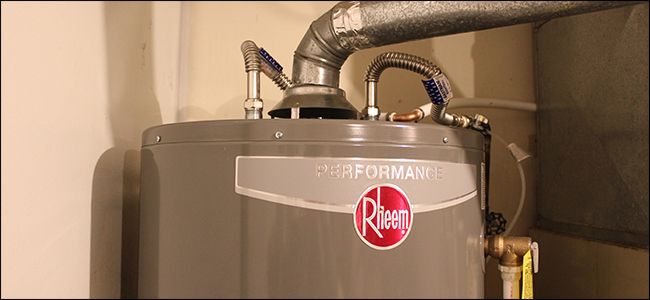The writer is making several good observations on the subject of How to Maintain a Hot Water Heater in a Few Simple Steps overall in this post following next.

Hot water is crucial for everyday convenience, whether it's for a rejuvenating shower or washing recipes. To guarantee your hot water system runs successfully and lasts longer, routine upkeep is essential. This write-up provides functional tips and insights on just how to maintain your home's warm water system to stay clear of interruptions and pricey repair work.
Intro
Maintaining your home's hot water system may appear complicated, yet with a few simple steps, you can guarantee it runs smoothly for many years ahead. This overview covers every little thing from comprehending your warm water system to do it yourself maintenance suggestions and understanding when to call professional assistance.
Significance of Maintaining Your Warm Water System
Normal maintenance not only prolongs the life-span of your warm water system but also ensures it runs efficiently. Ignoring upkeep can lead to reduced performance, higher power expenses, and also early failure of the system.
Indications Your Warm Water System Needs Maintenance
Recognizing when your warm water system requires attention can protect against significant issues. Look out for indications such as inconsistent water temperature, odd sounds from the heating system, or corroded water.
Purging the Hot Water Heater
Purging your hot water heater eliminates debris build-up, boosting performance and lengthening its life.
Monitoring and Replacing Anode Rods
Anode poles stop corrosion inside the storage tank. Inspecting and replacing them when broken is crucial.
Complex Concerns Calling For Specialist Aid
Instances consist of major leaks, electrical problems, or if your hot water heater is continually underperforming.
Regular Specialist Upkeep Perks
Expert upkeep can include complete examinations, tune-ups, and ensuring conformity with safety and security criteria.
Evaluating and Readjusting Temperature Settings
Adjusting the temperature level settings makes sure optimum efficiency and security.
DIY Tips for Maintenance
You can carry out several maintenance jobs yourself to keep your warm water system in top condition.
Looking for Leaks
Frequently inspect pipelines and connections for leakages, as these can cause water damage and greater expenses.
Understanding Your Warm Water System
Before diving right into maintenance jobs, it's useful to recognize the fundamental parts of your hot water system. Generally, this includes the hot water heater itself, pipes, anode poles, and temperature level controls.
Monthly Upkeep Tasks
Normal monthly checks can assist capture small problems prior to they rise.
Testing Pressure Alleviation Valves
Evaluating the pressure relief valve ensures it functions appropriately and prevents extreme pressure accumulation.
Shielding Pipes
Protecting hot water pipelines decreases warmth loss and can save power.
When to Call a Specialist
While DIY upkeep is helpful, some issues call for expert expertise.
Final thought
Normal maintenance of your home's warm water system is necessary for performance, longevity, and expense financial savings. By following these pointers and understanding when to seek expert aid, you can guarantee a trusted supply of hot water without unanticipated interruptions.
How to Maintain an Instant Hot Water Heater
Before tinkering with your hot water heater, make sure that it’s not powered on. You also have to turn off the main circuit breaker and shut off the main gas line to prevent accidents. Also turn off the water valves connected to your unit to prevent water from flowing into and out of the appliance. 2. When you’re done, you have to detach the purge valves’ caps. These look like the letter “T†and are situated on either side of the water valves. Doing so will release any pressure that has accumulated inside the valves while at the same time avoid hot water from shooting out and burning your skin. 3. When the purge valves’ caps are removed, you have to connect your hosing lines to the valves. Your unit should have come with three hoses but if it didn’t, you can purchase these things from any hardware or home repair shops. You can also get them from retail stores that sell water heating systems. Read the user’s manual and follow it to complete this task properly. When the hosing lines are connected, open the purge port’s valves. 4. You should never use harsh chemical cleaners or solutions when cleaning your unit. Make use of white vinegar instead. It should be undiluted and you’ll probably use about 2 gallons. 5. Now flush your water heater. This task should probably take about 40 minutes. We can’t give you specific directions for this because the procedure is carried out depending on the type, model and brand of your heater. With that being said, refer to the user’s manual. 6. When you’re done draining the unit, you have to turn off the purge port valves again. Remove the hosing lines that you earlier installed on each of the water valves. Put the valve caps (purge port) back in their respective places and be very careful so as not to damage the rubber discs that are found inside these caps. 7. Now that everything’s back in place, check your user’s manual again to find out how to reactivate your water heating system. 8. Once it is working, turn one of your hot water faucets on just to let air pass through the heater’s water supply pipes. Leave the tap on until water flows smoothly out of it. https://www.orrplumbing.com/blog/2014/september/how-to-maintain-an-instant-hot-water-heater/

Do you really like reading up on Tips on Maintaining a Water Heater? Create a remark down below. We'd be glad to see your opinions about this post. Hoping to see you back again soon. Be sure to take the time to distribute this blog entry if you enjoyed it. Thank-you for your time spent reading it.
Book Today